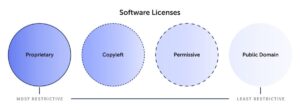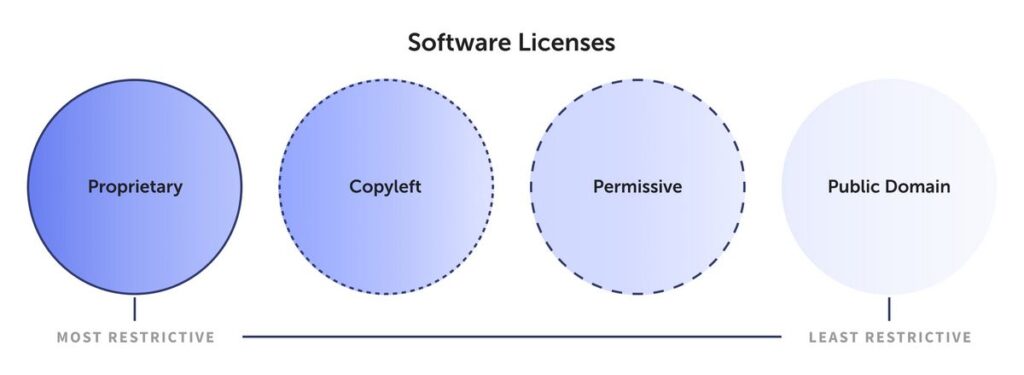
Table of Contents
- Introduction
- Understanding Software Licenses
- What Is a Source License?
- What Is a User License?
- Key Differences Between Source and User Licenses
- How Open Source Licenses Are Structured
- Examples of Source Licenses in Open Source
- Impact on Developers and Organizations
- Legal and Ethical Considerations
- The Role of Foundations Like Outercurve
- Choosing the Right License for Your Project
- The Future of Software Licensing
- Conclusion
Introduction
Software licensing defines how we use, modify, and distribute digital products. Whether proprietary or open source, licenses shape the ecosystem of innovation and collaboration. The distinction between a source license and a user license is fundamental to understanding the principles behind open source software.
In this article — “Licencia de fuente vs. licencia de usuario: ¿Qué significa ‘source license’ en el contexto de open source?” — we’ll explore the differences between these two types of licenses, how they affect developers and organizations, and why understanding them is crucial in today’s open software landscape.
Understanding Software Licenses
A software license is a legal contract between the software creator and its user, defining rights and restrictions regarding usage, modification, and distribution. Licenses exist to protect intellectual property while allowing different levels of access and collaboration.
Broadly, software licenses fall into two categories:
- Proprietary (Closed Source): The code is hidden, and users are given limited rights to use the software.
- Open Source: The source code is accessible, modifiable, and shareable under defined terms.
Understanding whether a software license governs source code or end-user usage helps clarify the freedoms and responsibilities involved.
What Is a Source License?
A source license (licencia de fuente) governs the rights to access and modify a program’s source code. It’s the foundation of open source philosophy — enabling developers to inspect, improve, and redistribute code under certain conditions.
In open source, a source license ensures that:
- Users can access the source code.
- They can modify and distribute derivative works.
- They must respect specific terms, such as attribution or keeping the same license (copyleft).
For example, the Open Source Initiative (OSI) defines a set of criteria that all open source source licenses must meet, including free redistribution and access to source code.
Source licenses encourage transparency and innovation, creating an environment where knowledge and code can evolve collaboratively.
What Is a User License?
A user license (licencia de usuario) governs how the end-user interacts with a software product — typically in proprietary contexts. It focuses on permissions to use software without granting access to the underlying code.
Common examples include:
- End User License Agreement (EULA): Defines how users can install and operate software (common for commercial software like Microsoft Office).
- Subscription-based user licenses: Define access rights over time, often tied to cloud or SaaS services.
User licenses emphasize usage over modification. They are restrictive by design, ensuring intellectual property protection while limiting redistribution or inspection of the code.
Key Differences Between Source and User Licenses
| Aspect | Source License | User License |
|---|---|---|
| Code Access | Full access to source code | No access to source code |
| Modification Rights | Allows modification and redistribution | Typically prohibited |
| Purpose | Promotes transparency and collaboration | Protects commercial use and IP |
| Example | MIT, GPL, Apache 2.0 | EULA, SaaS User Agreement |
| Typical Context | Open Source Development | Proprietary or closed software |
This distinction is crucial when choosing or contributing to software projects, as it defines how freely code can circulate and evolve.
How Open Source Licenses Are Structured
Open source licenses fall broadly into two families: permissive and copyleft.
- Permissive licenses (like MIT or Apache 2.0) allow nearly unrestricted use, even in commercial software.
- Copyleft licenses (like GNU GPL) require derivative works to remain open under the same terms.
Both are considered source licenses because they explicitly grant access to and control over the software’s source code. These licenses ensure a balance between freedom and responsibility — giving developers rights while preserving the open ecosystem.
Examples of Source Licenses in Open Source
Here are some common examples of source licenses and their characteristics:
- MIT License: Simple, permissive, widely adopted — allows reuse with minimal restriction.
- Apache License 2.0: Includes patent protection and explicit attribution requirements.
- GNU General Public License (GPL): Strong copyleft; any modifications must remain open source.
- BSD License: Another permissive license originating from Berkeley’s UNIX distribution.
- Mozilla Public License (MPL): A hybrid model that allows open and proprietary integration.
Projects hosted by organizations like Outercurve Foundation often choose licenses that align with their governance model, ensuring legal clarity for contributors and users alike.
Impact on Developers and Organizations
The choice between source and user licenses directly affects developers, companies, and users.
- For Developers: A source license provides freedom to study and improve software, fostering innovation.
- For Organizations: It encourages collaboration and reduces development costs by sharing maintenance efforts.
- For End-Users: It creates transparency, ensuring that the software behaves as expected.
However, organizations must manage compliance carefully. Failing to respect a source license’s requirements (e.g., not attributing code) can lead to legal consequences.
Legal and Ethical Considerations
Licensing is both a legal and ethical commitment. Developers who release code under a source license trust the community to use it responsibly.

Ethically, respecting licenses demonstrates professionalism and respect for intellectual property. Legally, it prevents disputes over ownership and distribution rights.
The Free Software Foundation (FSF) and OSI provide guidance on compliance and interpretation, ensuring open source remains a legally safe environment for collaboration.
The Role of Foundations Like Outercurve
Open source foundations like Outercurve serve as custodians of ethical open source development. They help projects navigate licensing complexities, manage contributor agreements, and ensure consistent governance.
By providing neutral legal infrastructure, foundations reduce risks for both individual contributors and corporate sponsors. Outercurve’s mission — promoting sustainable, collaborative innovation — exemplifies how source licenses empower global communities to work together.
Choosing the Right License for Your Project
Selecting the right license defines how others can interact with your software. Consider these factors:
- Do you want others to freely use your code in commercial projects? Choose MIT or Apache 2.0.
- Do you want modifications to remain open source? Choose GPL or AGPL.
- Do you want a balance between openness and proprietary integration? Consider MPL.
To simplify the decision process, visit Choose a License — a resource curated by GitHub to help developers select suitable licenses based on their goals.
The Future of Software Licensing
As technology evolves, so does licensing. Emerging challenges such as AI-generated code, SaaS business models, and digital ethics are reshaping how source and user licenses are interpreted.
New hybrid models aim to adapt to this reality — offering partial openness while ensuring sustainable monetization. However, the essence of open source remains the same: freedom, collaboration, and transparency.
Foundations like Outercurve will continue to play a crucial role in guiding developers through these changes, ensuring that innovation and ethics remain aligned.
Understanding the distinction between source license and user license is vital for any software professional. This concept — “Licencia de fuente vs. licencia de usuario: ¿Qué significa ‘source license’ en el contexto de open source?” — underscores how open source enables collaboration through transparency and shared responsibility.
While user licenses control access, source licenses empower innovation. By choosing and respecting the right license, developers and organizations build trust, sustainability, and progress in the software community.
Ultimately, open source licensing is not just a legal matter — it’s a commitment to freedom and shared growth across the global technology landscape.
